- Gall aphid on currant
- Pest Chemicals
- Biological methods of struggle
- Aphid Prevention
Gall aphids on currants feed on plant sap and cause fungal damage to the leaf. The fruit bush tries to heal the wounds, as a result of which ugly red tubercles appear on the leaves, and its productivity drops sharply. Culture weakens, discards the leaf and dies over time.
Folk ways
Red aphid It has a small size - only 2.2 mm. It looks in the photo of the sheet as a small bright dot. It is difficult to notice a single individual, but the accumulation of pests is striking even an inexperienced gardener. As soon as a small gray spot appears on the inside of the foliage, you need to act.
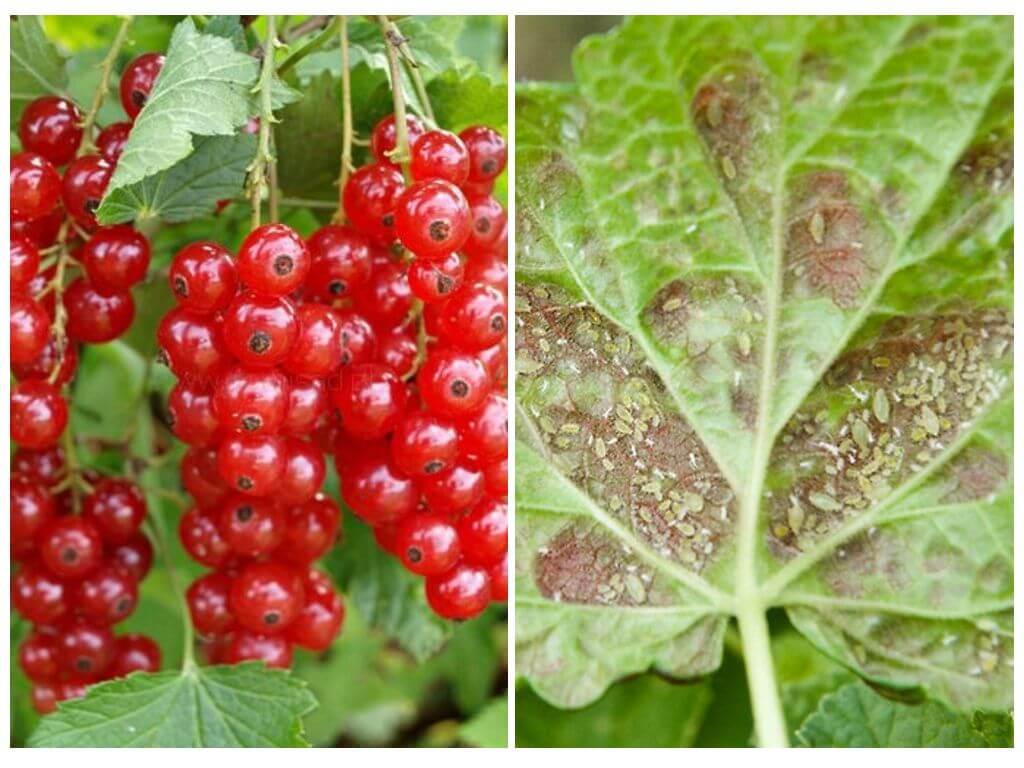
On a note!
The life cycle of the gall aphid is short, but the female is quite fertile. For one summer season, about 15 generations of this insect are replaced by currants.
Until the pest has time to breed, you can apply folk methods of control:
- Kilogram tobacco powder pour 10 liters of warm water and send for a day in a dark and warm place. Filter the infusion, add four tablespoons of liquid soap to it.
- Four kilograms of tomato tops are crushed and poured with 10 liters of liquid at room temperature. The product is closed with a lid and sent for knocking in a dark place, after which it is filtered.
- A kilogram of hot pepper is poured with cold water and brought to a boil. After holding on low heat for one hour, and then insist 48 hours. The product is filtered and bottled. The concentrate is diluted in water (75 ml per 5 l), when the plant needs treatment from aphids.
- The bucket is half filled with marigolds and filled with water. Insist means 24 hours, then filter and bring to a volume of 10 liters.
To fight gall aphids on currants is effective, you should destroy colonies of garden ants. Insects protect pests because they give them sweet juice. Anthills should be dug up and filled with boiling water, covered with ash or transferred to another place.
On a note!
Gall aphids do not like to settle on black currants. These bushes are attacked by gooseberry aphids.
To kill aphids also use:
- ammonia;
- soap;
- soda;
- milk and iodine;
- Coca Cola;
- vinegar;
- garlic;
- celandine;
- ash;
- mustard;
- vodka;
- green soap;
- Birch tar;
- boric acid.
Chemicals
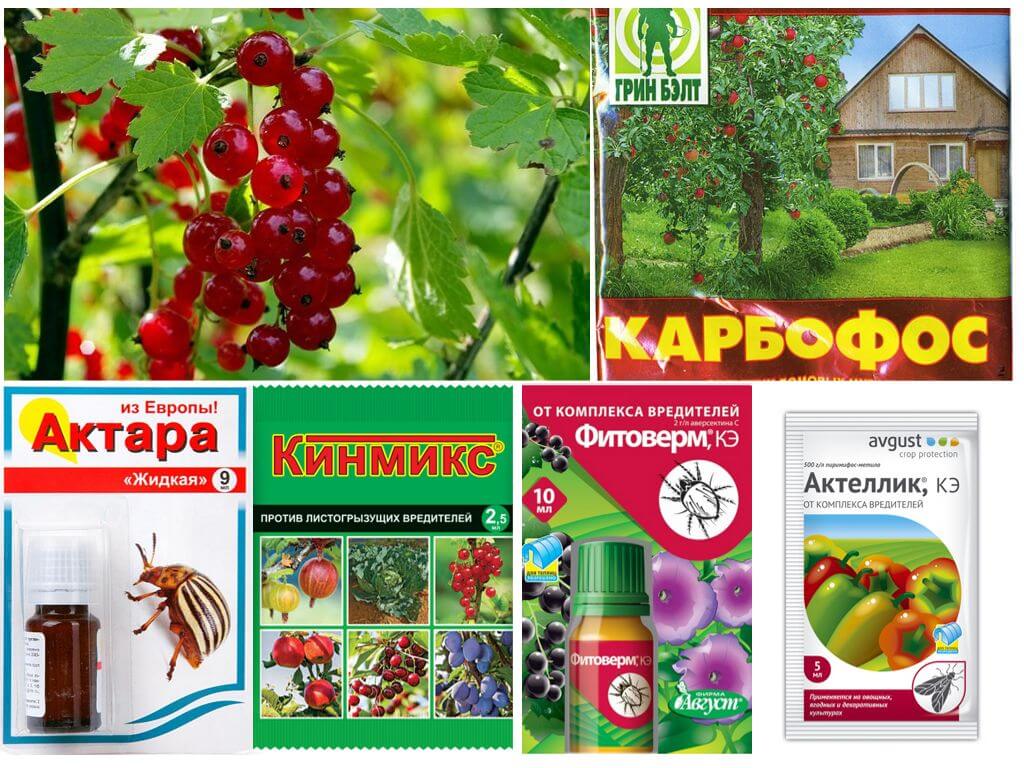
Gall aphids cannot be used chemicalswhen the plant has flowers or fruits. You can treat currants from gall aphids before flowering and after harvest.
The first treatment destroys living individuals and their eggs. The second is aimed at ridding the currant bush from wintering clutches.
On a note!
Plants can be sprayed only in dry and calm weather. It is better to choose the days when the sun is hidden behind the clouds. The procedure is carried out until ten in the morning or in the evening.
When working with poisonous substances, you should protect your face with a mask and a respirator, and put on a headscarf or plastic hat. Wear rubber gloves on your hands. After the procedure, things are sent to the wash.
The following gall aphid preparations are available on the market:
- Actara drug protects currants for two months.The first results are visible after four hours.
- Combined action drug Tanrek.
- Kinimiks - an insecticide helps get rid of gall aphids and other pests.
- Inta Vir. It affects the nervous system of insects. Aphids die from paralysis.
- Actellik - if the infection is strong, then one ampoule is dissolved in a liter of water.
- Karbafos - a solution is prepared from the powder (75 g of dry matter per 10 liters of water) and currant bushes are sprayed with it.
- Spark bio paralyzes insects and causes their instant death. Not valid for eggs.
- The drug Fitoverm quickly destroys gall aphids and other dangerous insects. For the solution, 4 ml of poison should be diluted in a liter of water.
On a note!
In early spring, before the leaves appear on the currant, a root spray is carried out with a solution of mineral fertilizers. For it, 400 g of potassium chloride, 500 g of urea and the same amount of nitroammophos are mixed. The mixture is poured with a bucket of water and insisted for one hour. This tool feeds shrubs and destroys wintering eggs of gall aphids.
Physical methods
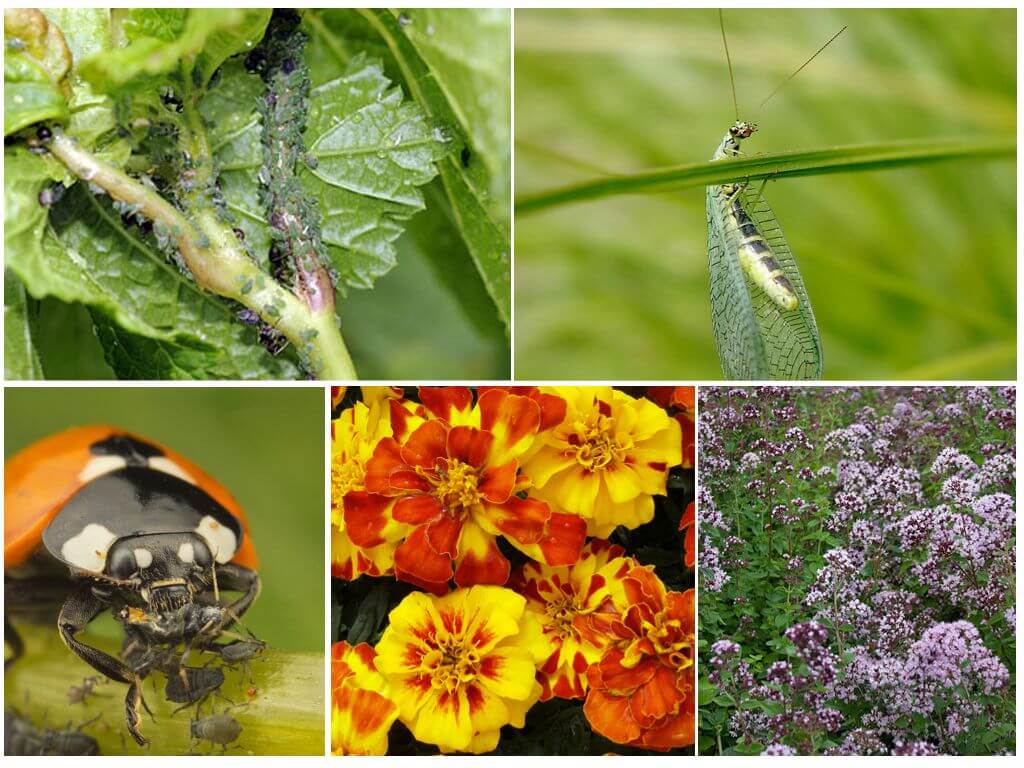
Gall leaf aphid lays eggs under the bark of the plant before the onset of cold weather, which must survive the winter. In the spring, with the appearance of the first leaves, pests hatch from the masonry and begin to destroy the currant bush.
To prevent the appearance of gall aphids, the plant is watered with boiling water. It awakens sleeping kidneys and destroys wintering eggs.
On a note!
Water for processing the bush is heated to a temperature of 50-60 degrees.
Aphid control methods include cutting infected shoots. Branches damaged by a pest are burned in a fire.
Useful insects are attracted to the site: ladybugs and lacewings. To do this, nectariferous flowers are planted next to the currant:
- oregano;
- marigold;
- Daisies
- dill;
- anise.
To prevent plants from attacking red gall aphids, dill, onion, tomato, coriander are planted next to them.
Leaves need to be hosed. A strong pressure of water will bring down aphids and ants from them. Watering should be done on a cloudy day or early in the morning until the sun begins to bake.
If the plant is too infected and no drugs act on it, then the bush should be cut in the fall "under the root" or completely dig it out. Dug up the earth must be sprinkled with ash or tobacco.
Prevention
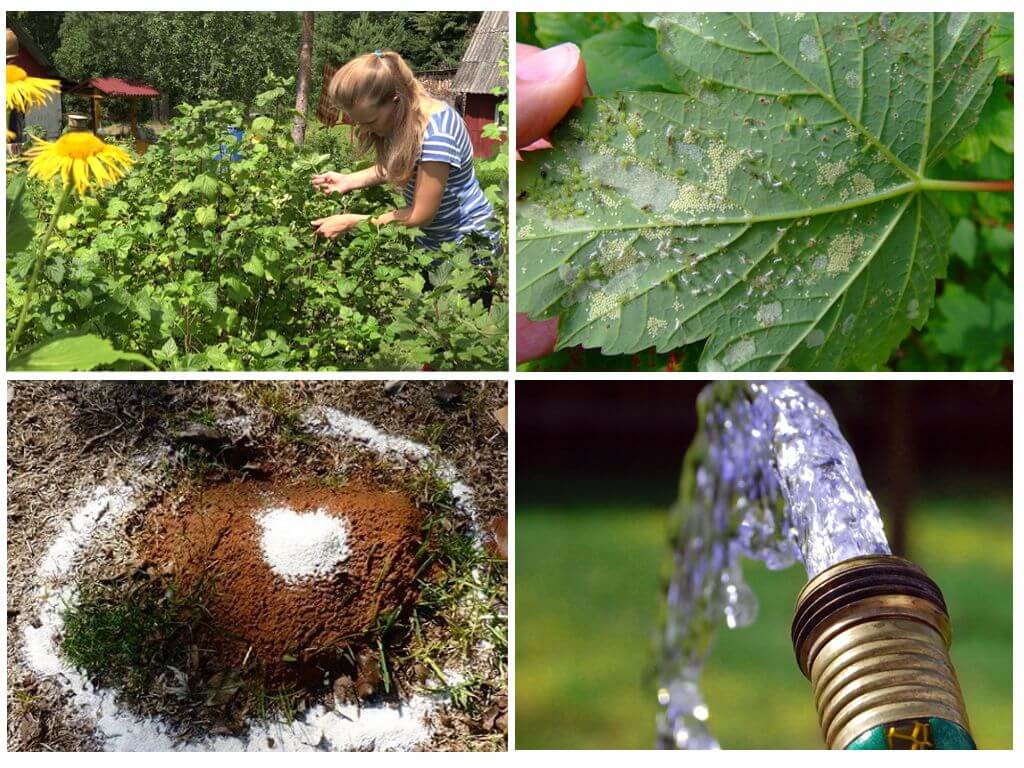
Gall aphids on red currants will not appear if timely preventive measures are taken.
If you suspect the appearance of aphids, carefully wash the leaves with a soapy solution. It clogs the skin of the aphids and it cannot breathe. Processing should be carried out every evening for a week to kill hatched individuals.
On a note!
For a soap solution, they take a bar of tar or laundry soap, rub it on a fine grater and fill it with 10 liters of warm liquid.
Keep the ground near the bush clean. You need to remove all weeds and mulch celandine, which is poisonous to aphids.
The following measures must be taken to protect the plant:
- destroy anthills;
- spread the adhesive tape pieces near the bush, with the adhesive side up;
- provide the plant with sufficient watering;
- inspect leaves and shoots.
It is necessary to monitor the top dressing of the bush. Nitrogen fertilizers reduce the plant's ability to resist pests and diseases.
Near the currant bushes, it is necessary to plant aromatic herbs that attract ladybugs and scare away ants and aphids. These are marigolds, anise, dill, onions.
Good results can be achieved if all the methods are brought together: prevention, chemical and folk control measures. It is not always possible to get rid of aphids in one year. There may be eggs under the bark, from which new individuals will appear. But if you do not give up, the pest will completely disappear.
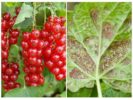
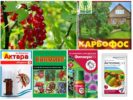
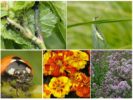
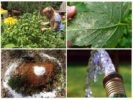
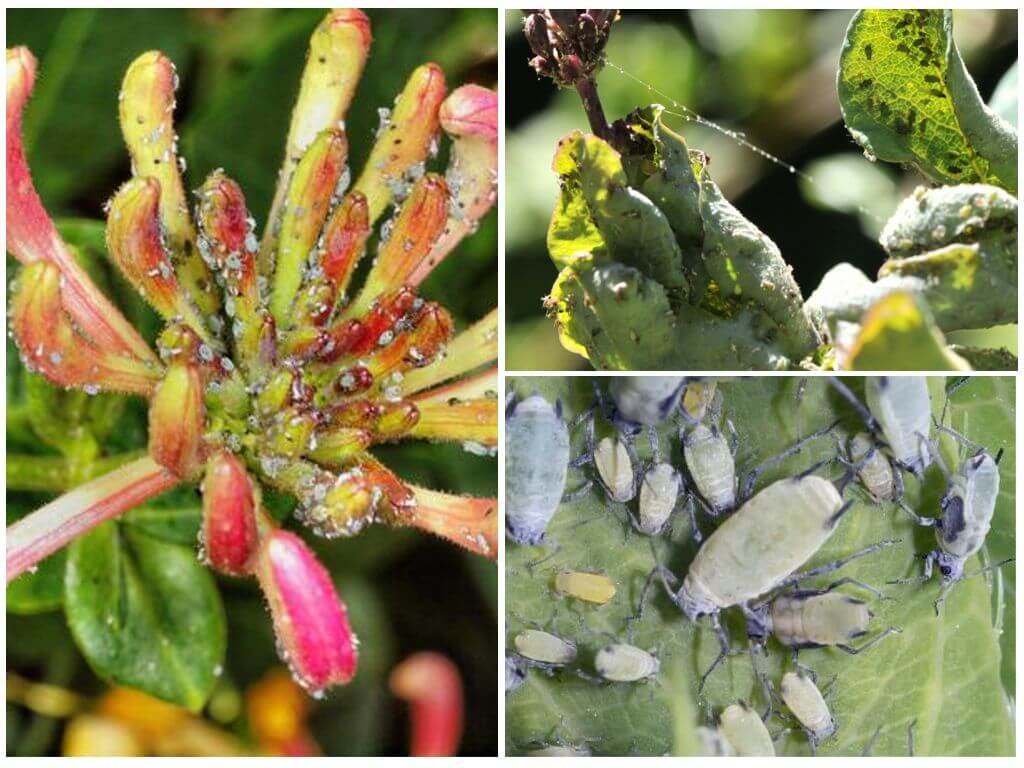
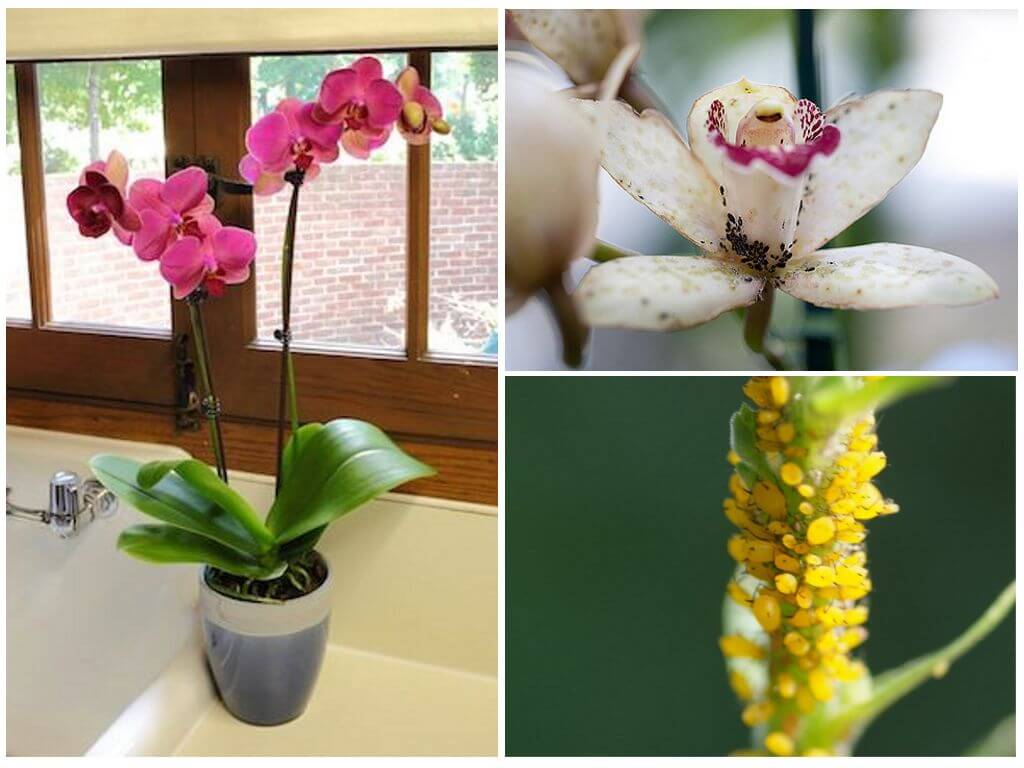
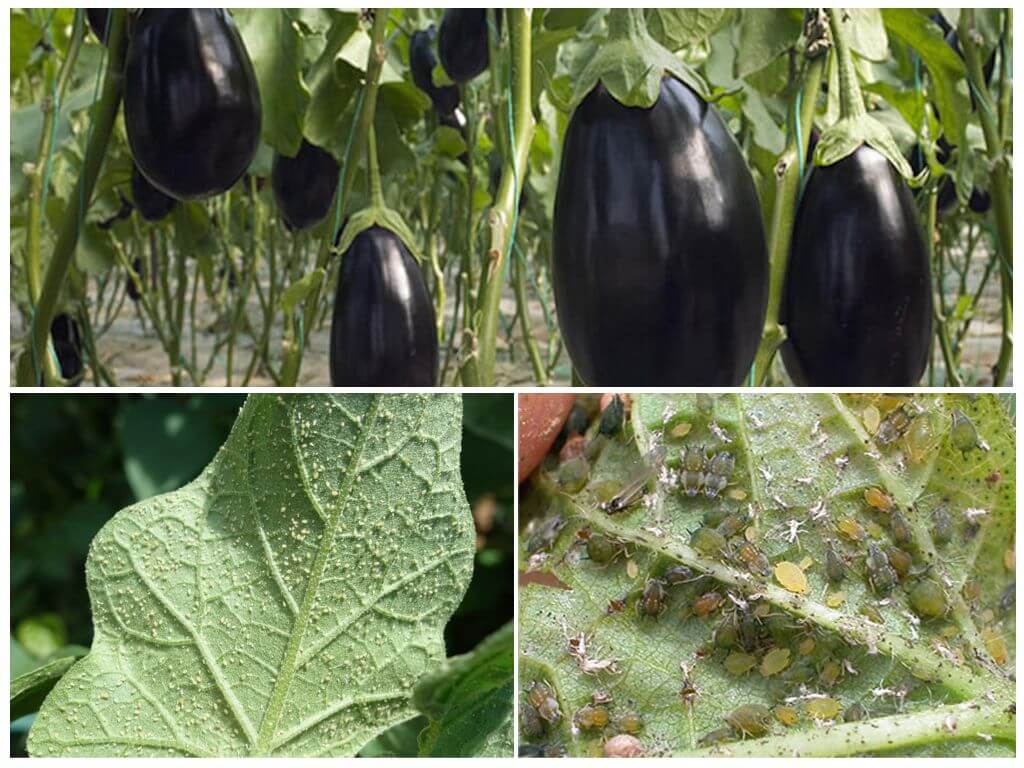
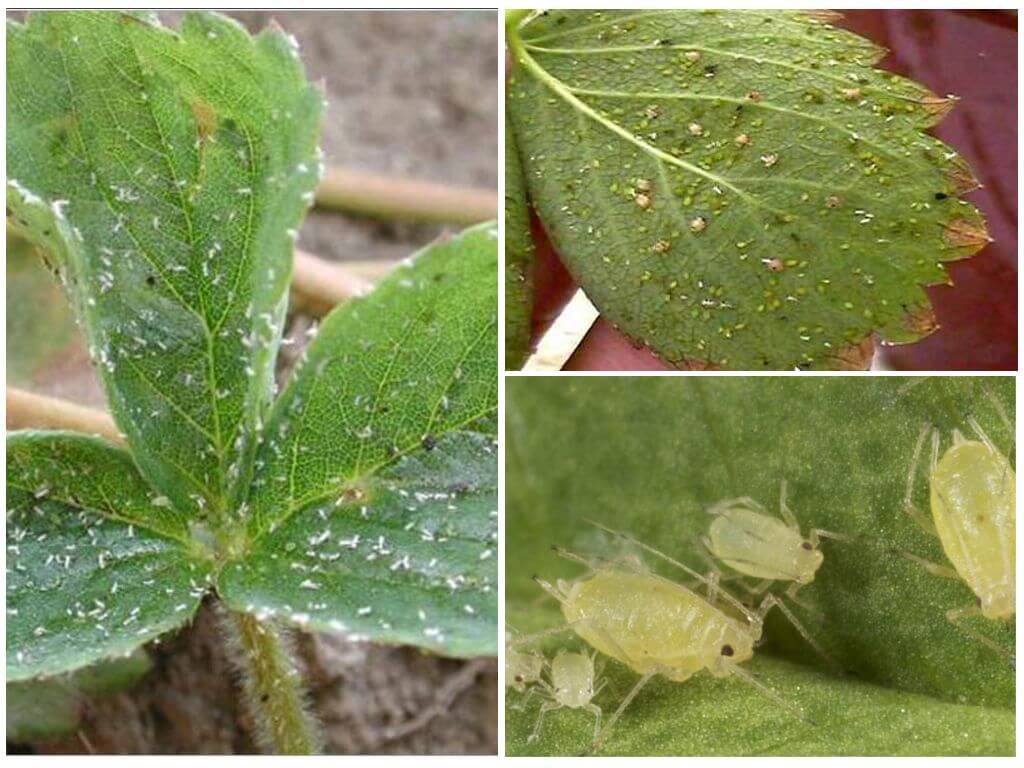
I thought that red tubercles on the leaves is some kind of disease. I didn’t even think that aphids attacked currants. Now I know how to deal with it.
Thank you for the article. For a long time I was looking for the necessary information about folk recipes from aphids. Already preparing an infusion of marigolds. I hope they help me.
Guys, who knows, boiling water does not harm the plant. I want to try this method, but I'm afraid that I will ruin the bush.
Not quite boiling water is needed. The article also says 50-60 degrees. This temperature is beneficial for the plant.
Andrei, I pour practically clean boiling water right away from the stove. The stove stands on the street, I warm the water with wood, and immediately, into a watering can and forth. I water in late autumn, at the end of November. I haven’t cooked anything yet. By the way, there are many videos on the Internet how to do this.
I learned many interesting ways to deal with a pest. I’ll definitely try both folk remedies and chemistry.